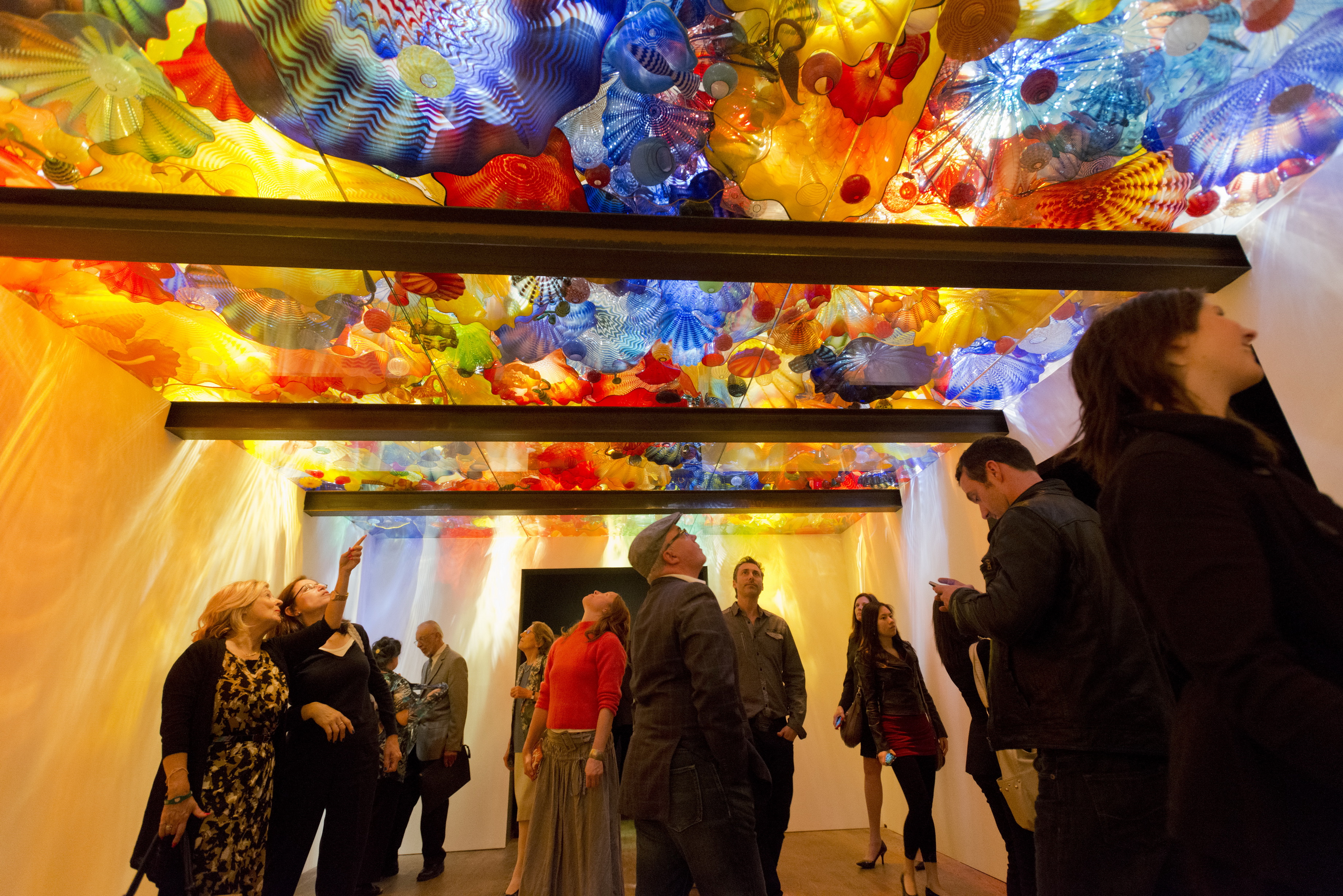If you have walked by Sherbrooke and Crescent recently, you have likely already noticed one of the staples of American-born sculptor Dale Chihuly’s repertoire. The sculpture, entitled The Sun, emerges from a mass of glass tubes that snake around each other in a brilliant, chaotic tangle of yellow and red.
A prolific modern-day artist, Chihuly’s fame arose from his elaborate sculptures made entirely of blown glass. An exhibit of his works currently resides at the Montreal Museum of Fine Arts (MMFA) until Oct. 20.
Chihuly’s Persian Colonnade surrounds the staircase entering the exhibit, welcoming us to his world of art. Sunlight streams through the windows and illuminates these flower-like creations to strike a harmonious balance between natural and man-made beauty, a frequently recurring theme in his work.
In the next room, spotlights on the ceiling break through darkness, illuminating vibrant bowls that skirt the room on tall pedestals. This Macchia Forest contains over 300 colours which, along with the elevation of these creations, instills a humbling effect on viewers.
One of the more experimental works in the collection was Chihuly’s Glass Forest #6. In this piece, tree-like pieces of blown glass glow a vibrant white and pink, the result of being filled with argon gas and neon. Mirrors surround the artwork, creating a mystifying, psychedelic scene. In this sculpture, various stages of growth can be observed, with tall ‘full grown’ structures towering over small, germinating seeds. This neon forest conjures the idea of manmade objects invading nature, and creates an eerie panorama.
In the next display, two boats rest on a dark black platform dotted with an assortment of glass-blown spheres. At first glance, it appears as though the boats rest upon calm surface waters. Soon, however, the mixture of blown glass stacked within the boats shifts the scene to that of two sunken ships filled to the brim with sea creatures and rocks. This adds to the ‘controlled chaos’ of the piece; while one boat is only filled with spherical glass, the other contains an assortment of glassblown organisms, seaweed-like tendrils, and shells. The profound contrast between motion and stillness creates an unsettling scene and a sense of unpredictability within the work. Again, we see Chihuly’s use of striking colour contrasts, as he uses an entirely black backdrop against the illuminated and vibrant glass structures. Although none of the individual objects within the boats are the same, there remains a noticeable theme in each.
The highlight of the exhibit was Chandeliers and Tower. These several- hundred kilogram sculptures hang together in a single room and startle observers with their majestic beauty. Lit from above in an otherwise entirely dark room, they are built to represent stalagmites and stalactites in caves. Once again, we observe a stirring within the structures, as tubes of blown glass reach in all directions and entwine around each other in a shadow of movement. Each structure possesses its own vibrant colour, which further intensifies the display.
Although there are recurrent themes within much of Chihuly’s works, each of his creations is visually distinct. The exhibit within the MMFA contains only a small portion of Chihuly’s many works, but this tip of the iceberg is well worth a visit for both veteran art enthusiasts and intrigued novices alike.
Chihuly: Utterly Breathtaking runs at the Montreal Museum of Fine Arts until October 20th. Student admission is $10.44.







